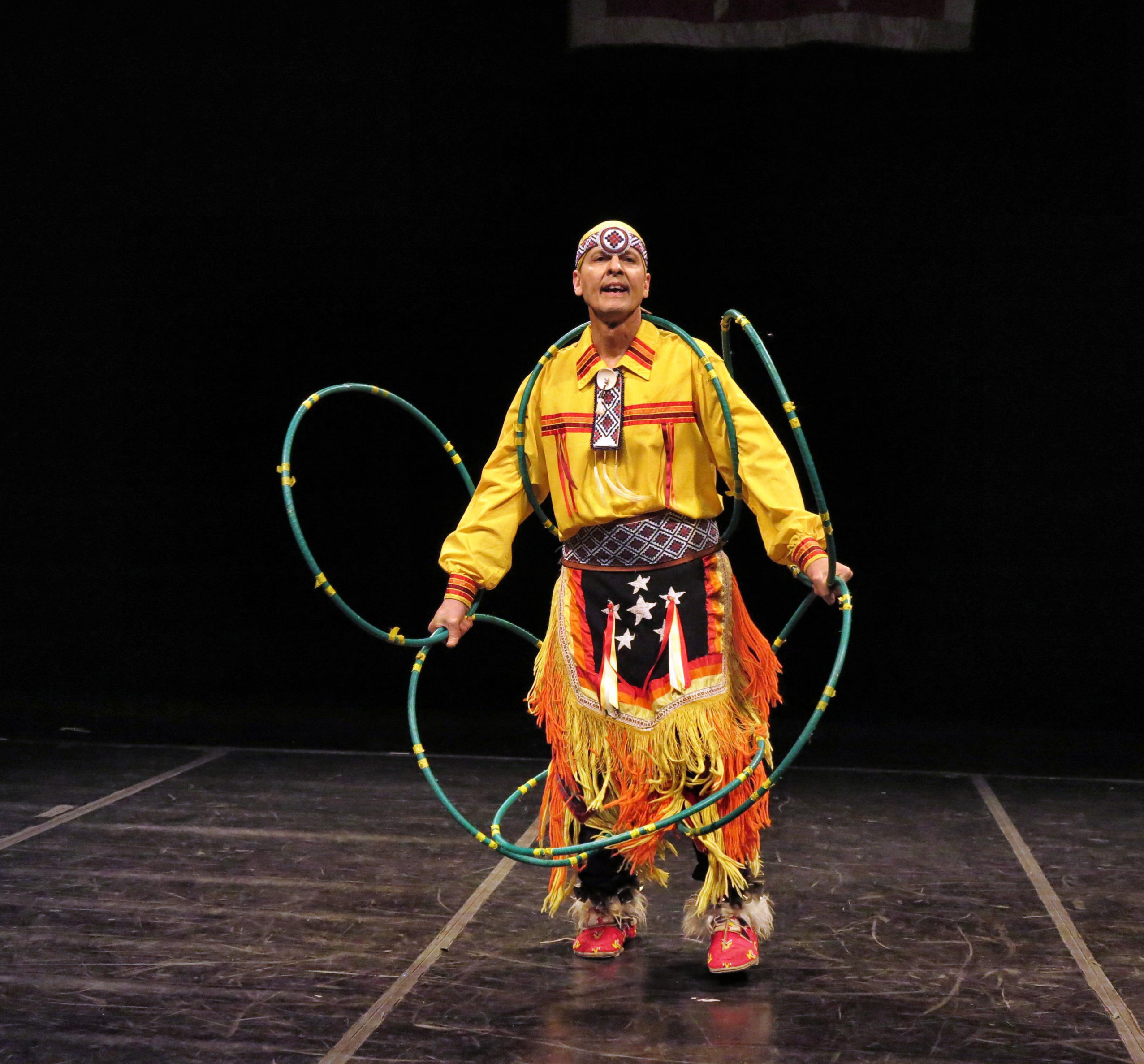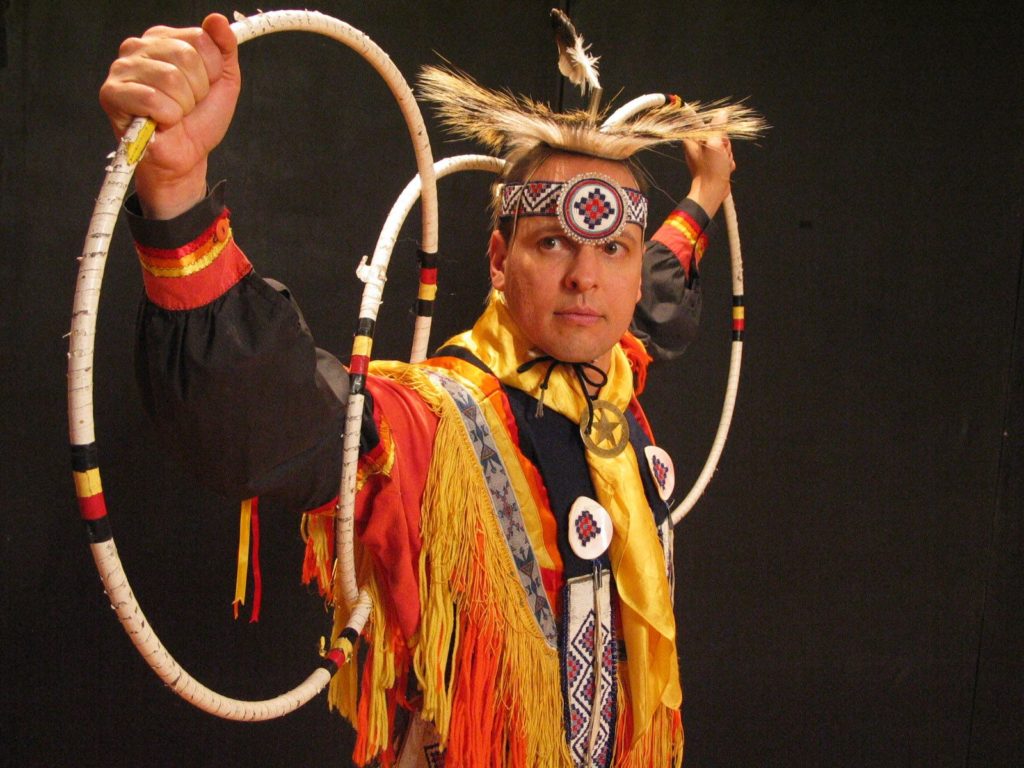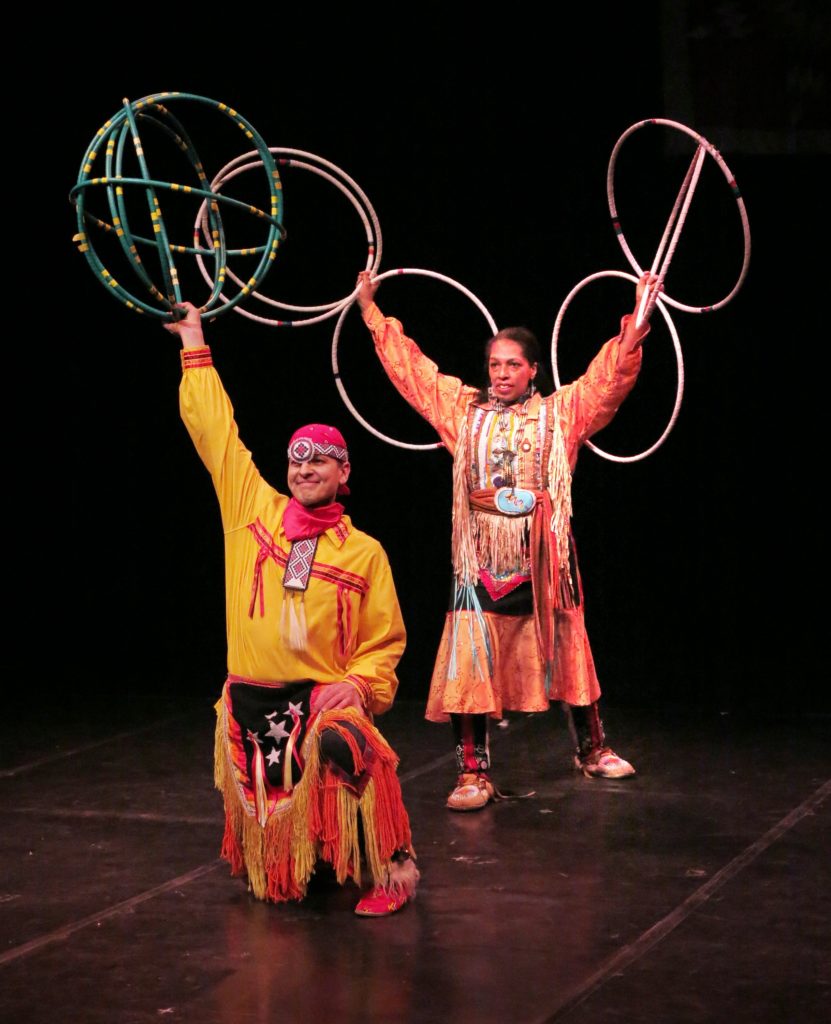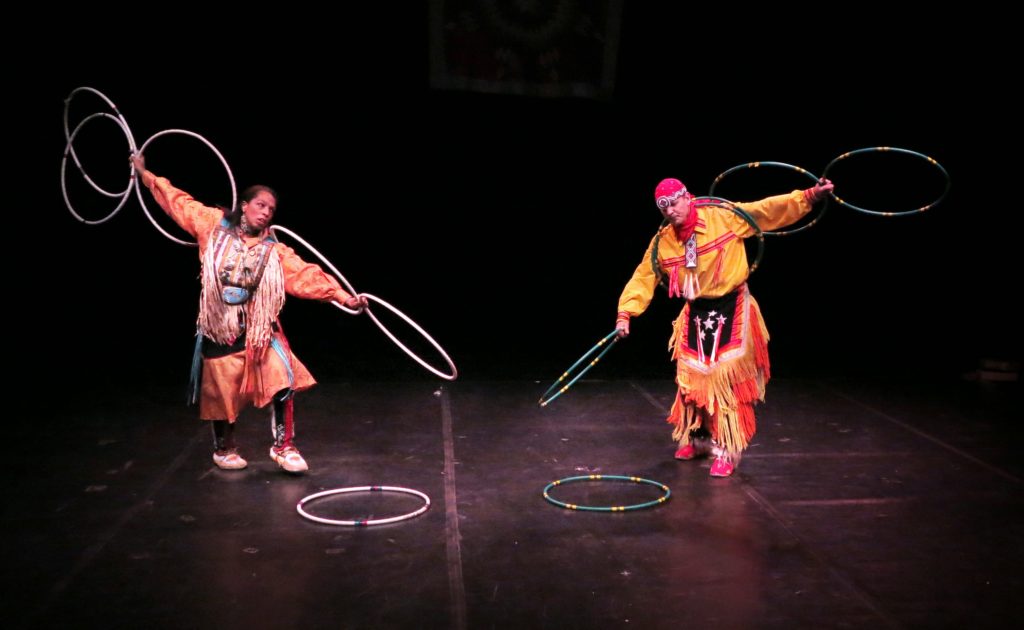
Michael Taylor always knew he was Choctaw. But it wasn’t until he was in his 30s—after years of working in postmodern dance and improv—that he began training in Native American dance styles, eventually joining the Thunderbird American Indian Dancers.
In his youth, he trained under postmodern dance pioneer Rudy Perez in Los Angeles, and later moved to New York City, where he studied under Lynn Simonson and Phyllis Rose and helped artists and choreographers showcase their work. “A few choreographers and I would organize performances for artists not in major companies,” Taylor says. “We would make just enough money to pay the theater and the choreographers.”
During this time, Taylor sought out other Native people living in the New York City area, and met the director of the Thunderbird American Indian Dancers, Louis Mofsie, who became the first person to teach him Native American dances.

Having studied in multiple dance genres, Taylor says Native American dance training is completely different from any other. “It’s not formal classes where you learn steps that you do over and over again,” he says. “It’s a lot of watching others at powwows [ceremonies involving feasting, singing and dancing—some of which have evolved into competitions], and trying. If you really want it, you show up, get out there and dance. Even if you don’t think you’re ready, if you have the courage to just do it, people will come help you learn more.”
Taylor emphasizes that there are many tribes and nations with their own unique customs and dances, but that for most all of them, if you show a desire and commitment to learn, they will show you how to dance.
Through this training, Taylor has become a grass dancer for the Thunderbird American Indian Dancers, the oldest resident Native American dance company in New York, founded in 1963 by members of the Mohawk, Hopi, Winnebago and Kuna (San Blas) tribes. According to Taylor, grass dancing originated on the Great Plains. “One origin story of the dance is that before colonialism, Native Americans lived in tepees and followed the buffalo,” Taylor says. “As they traveled, the grass was very tall, sharp and not hospitable. Young men would go ahead of the tribes with a drum, and dance to flatten the grass for when the others arrived. A second history is that there was a grass priest society that would wear grass and dance as they prayed. Now, when I dance, my outfit is yarn fringe to simulate the movement of grass.”

Each year, Taylor and his fellow Thunderbirds hold a powwow and dance concert. This year, COVID-19 has impacted their community in devastating ways (a few Thunderbird dancers were tragically victims of the virus), thus far preventing the group from performing for a live audience in 2021. Still, they came together in February to livestream social dances from various tribes. “Audience or no audience, it was an amazing performance,” Taylor says. “Everyone brought their talent, their love and what they wanted to share. We were all tested before, and when the show was done, we put our masks on and went back out into the world.”
Here, he shares about the impact of COVID-19 on the company, the dance teachers who helped him reach his potential and his advice for teachers across genres.
On the impact of COVID-19: “We are missing those in our group who we’ve lost: husband, mother, aunt, child, an elder. Beyond the sadness, though, it has also helped bring us together. We had a few Zoom gatherings where, in our way, we honored those lost with song and with sharing. We are all from different tribes, and we have respect for the different ways we honor the dead—we gave everyone room to do that. The grieving will go on. Of course you grieve, in Native American culture, you earned that. It’s normal and natural. Don’t deny it—however long it takes is fine.”

On the dance teachers who have made all the difference: “The most impactful teacher for me has been Thunderbird’s director, Louis Mofsie. He started me off, he opened his arms, and we danced. Calvin Burns was another person who made a difference for me. When I first showed up to powwows, Calvin saw that I was out there doing my best. I was 30, I had just started, and I wasn’t that good. I would miss steps, or I wouldn’t be on the beat, and he would gently help me. He would take me aside and say, ‘OK, try this.’ The fourth time I competed, I did the things he taught me, and I got first place. It was more than showing me the technique. It was his kindness that helped me dance with joy, and feel pride in being there.”
The most helpful correction he’s ever received: “No matter what, you end on the beat. The other correction is really more of a simple piece of advice: ‘Be you.’ Yes, learn the way (we have an expression that there is never perfection, just a way of doing), but still be you.”

His advice for dancers who want to pursue Native American dance: “When things open up, go to a powwow and introduce yourself. You may not get anywhere the first three or four times, but when people notice that you really mean it, they will offer help. Other than that, you can look at the Thunderbird website, where they sometimes offer classes.”
His hopes for dance teachers: “If Native American ways can offer anything to dance teachers, it’s that before you offer technique, offer what dance has done for you. Show your students comfort, and find a way to challenge them without causing any shame—without anything being lost in their personality or self-confidence. In my opinion, that is the main challenge we as teachers will face. Yes, hone the dancer, but don’t hone them at the expense of self-confidence.”




